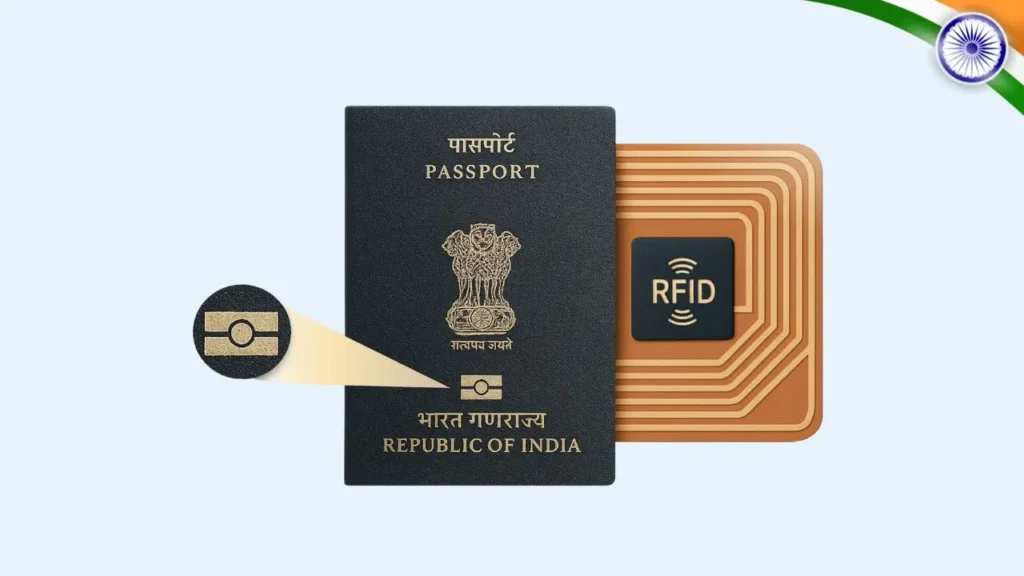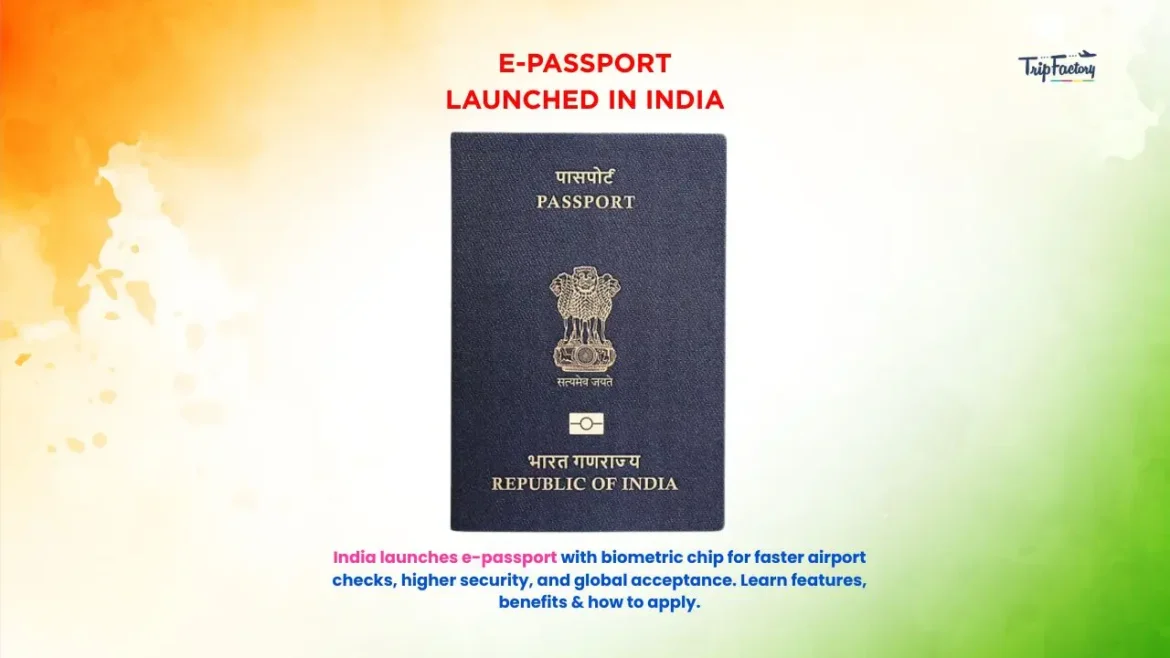Here are 10 key points from the e-Passport launch news in India:
- India launches e-passports – a new, secure version of traditional passports.
- The project was first introduced as a pilot on April 1, 2024 by the Ministry of External Affairs.
- E-passports are now available at select Passport Seva Kendras, with a plan to expand nationwide.
- They can be identified by a small gold chip emblem printed on the front cover.
- Each e-passport has an RFID chip and antenna embedded inside the cover.
- It stores biometric details like fingerprints, a digital photograph, and iris scans.
- The passport also holds personal details such as name, date of birth, and passport number.
- E-passports are encrypted and contactless, reducing the chances of fraud or duplication.
- They are designed as per International Civil Aviation Organization (ICAO) standards.
- Travelers with e-passports will benefit from faster airport checks, higher security, and global acceptance.
India has officially launched the e-passport, a new kind of travel document that combines physical security with digital technology. This step marks a big change in how passports work, making international travel safer and quicker for Indian citizens.
The e-passport was first introduced as a pilot project in April 2024 by the Ministry of External Affairs. Now, it is being rolled out at select Passport Seva Kendras, with plans to expand the service across the country in the coming months.
A simple way to recognize an e-passport is the small gold-colored chip symbol printed on the front cover, just below the word “Passport.”
What is an e-Passport?

An e-passport is an upgraded version of the normal passport. It comes with a built-in Radio Frequency Identification (RFID) chip and an antenna. These store important details of the passport holder, such as:
- Personal information (name, date of birth, passport number, etc.)
- Biometric details (fingerprints, digital photograph, and iris scan)
This makes it much harder to copy or misuse compared to traditional passports. It also allows for faster immigration checks at airports around the world.
Key Features of India’s e-Passport
The Indian e-passport has been designed as per International Civil Aviation Organization (ICAO) standards. Some of the main features include:
- An electronic chip embedded inside the front cover
- Stores biometric data like fingerprints, photo, and iris scan
- Holds personal details safely in digital form
- Contactless technology with encryption for security
- Reduces the risk of forgery or duplication
- Enables quicker processing at automated airport gates
Benefits of Having an e-Passport
The e-passport comes with several advantages for Indian travelers:
- Faster clearance at airports with automated e-gates
- More secure because of biometric data and encrypted storage
- Globally accepted since it meets ICAO standards
- Less chance of fraud or identity misuse
- Convenience during international travel due to smooth verification
How to Apply for an e-Passport in India
The application process for an e-passport is almost the same as a normal passport. Here’s a step-by-step guide:
- Visit the Passport Seva Portal online.
- Create a new account or log in with your existing one.
- Fill in the e-passport application form.
- Select your nearest Passport Seva Kendra (PSK) or Post Office Passport Seva Kendra (POPSK).
- Pay the required application fee online.
- Book an appointment and visit the selected center with your documents for verification.
At the moment, e-passports are available only at a few centers. However, the government plans to make them accessible across the country soon.
India Joins the List of e-Passport Countries
With this launch, India becomes part of the group of countries that issue biometric-based passports. This move is expected to improve travel safety, reduce the risk of passport fraud, and speed up the process for millions of Indian travelers in the future.

